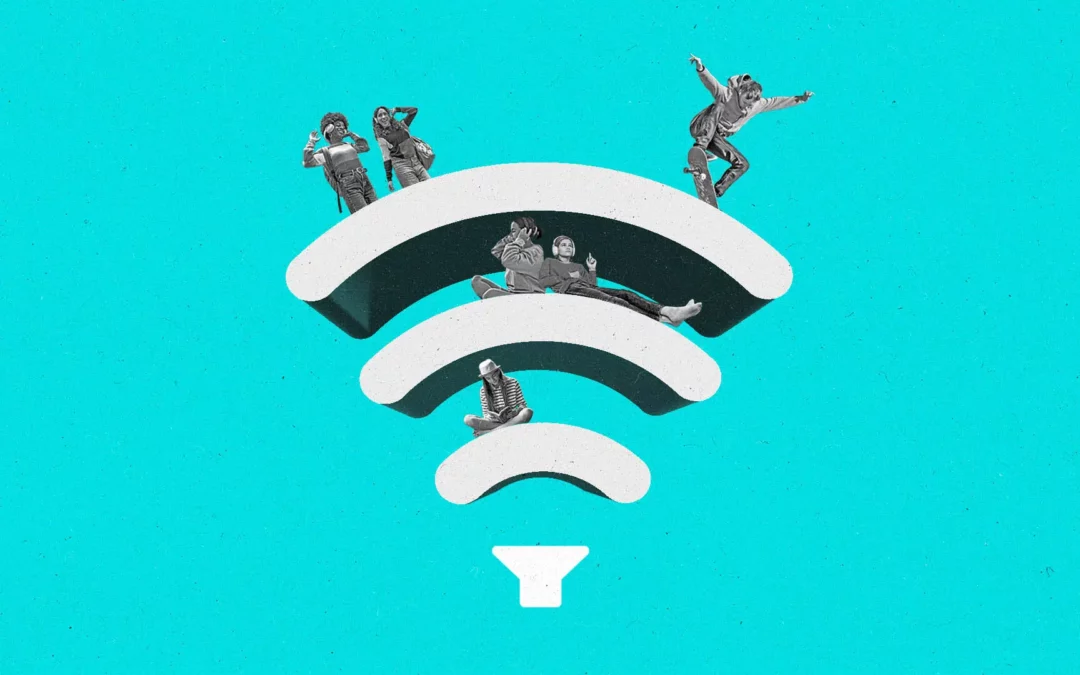Young folks enjoy going to the cinema.
For example, 99% of the audience in the United States for A Minecraft Movie’s opening weekend in April ranged in age from 13 to 24. It grossed about $1 billion in ticket sales worldwide, including more than $400 million in the United States.
It reflects information on Gen Z entertainment trends. According to the National Research Group (NRG), Generation Z attends the movies more than any other age group.
This may contradict the widely held belief that young people prefer to watch short-form user-generated material on YouTube, TikTok, and other social video sites.
READ MORE: The Goal Of Two Gen Z Founders Is To Transform The OOH Advertising Business For Their Generation
To be fair, they do it a lot – GWI reports that more than half of Gen Z watch YouTube on a daily basis.

But it would be unfair and unwise for advertising to limit Gen Z to that type of consumer. They have repeatedly demonstrated a strong preference for professionally produced, premium material that interests them and is properly marketed to them — and this is not limited to big-screen movies.
They are interested in discovering older movies and TV shows on streaming platforms; they are the generation most likely to listen to and discover new music on an audio streaming app; and nearly a quarter of them play digital games.
Inside Gaming’s Push to Level the Playing Field in Advertising
“A lot of commentary has been made around how much this generation is engaging with short-form content, but this underestimates how engaged they are with long-form content,” says Matthew Smith, a data journalist with GWI. “They’re the most likely generation to prefer long-form to short-form, and they believe long-form is more educational and is of a greater quality.”
The Theater-to-Streaming pipeline
Moviegoing hasn’t fully recovered to pre-pandemic levels, but don’t tell Gen Z that. According to Smith, the percentage of American Gen Zers who go to the movies at least once a month has climbed by 29% since 2021, outpacing other generations.

With Gen Z butts in seats, in-theater advertising businesses such as National CineMedia (NCM) and Screenvision have been providing brands with new options for reaching viewers on the biggest screens.
Some of the most popular films in theaters—often driven by young moviegoers—also become streaming hits, and the theater-to-streaming pipeline is a tremendous flywheel for advertising. According to Smith, Gen Z is more likely to find new businesses and products through streaming platforms rather than traditional advertising methods.
“As streaming services are being established as a significant advertising channel for this generation, advertisers should pay attention to the rights of major cinematic releases in order to capitalize on viewership later down the line,” adds Smith.
Furthermore, young people regard streaming services as discovery tools. According to a Tubi and Harris Poll survey conducted in March, 87 percent of Gen Z respondents want streamers to show them older content that they have never seen before.
According to NRG, 65% of Gen Z consumers use streaming apps to listen to music on a daily basis.
According to GWI, podcasts are the fastest-growing type of audio content among Gen Z, and it appears to be trickling down to the generation behind them as well – the percentage of 12 to 15-year-olds who say they listen to podcasts has increased by 29% since 2021.

“Since 2021, the rate at which Gen Z discovers new products through podcasts has outpaced growth seen in TV, social media and even music streaming,” according to Smith. “As podcast-driven discovery continues to surge, the door is wide open for brands to engage this highly attentive audience.”
However, advertisers have yet to fully capitalize on audio’s potential: the channel accounts for 25% of consumer attention but only 8% of ad investment.
At a recent event, Will Doherty, SVP of inventory relationships at The Trade Desk, stated that including audio into your media plan can positively impact almost any other aspect of your strategy. “It’s one of those channels that becomes a superpower for almost every other investment.”
Gaming’s vast opportunities
According to a new Dentsu estimate, there are around 3.4 billion gamers worldwide. It refers to gaming as “the new social platform” – 32% of Gen Z gamers are more likely than the average gamer to play with friends, according to the survey.
“Time spent on gaming continues to rise, especially among Gen Z and millennials,” according to the survey.
According to Smith of GWI, Gen Z gamers play for at least nine hours every week.
However, the gaming industry contributes for less than 5% of ad spending, according to the Dentsu analysis.
However, there is some good news: both advertisers and publishers are becoming increasingly interested in programmatic gaming solutions. At this year’s PlayFronts, Roblox revealed that companies would be able to buy rewarded video advertising programmatically.
“In-game advertising is a significant channel for engaging this generation,” according to Smith. “They’re as likely to discover new brands and products through in-game advertising as they are ads on TV and film streaming services.”
Step into the ultimate entertainment experience with Radii+ ! Movies, TV series, exclusive interviews, live events, music, and more—stream anytime, anywhere. Download now on various devices including iPhone, Android, smart TVs, Apple TV, Fire Stick, and more!


